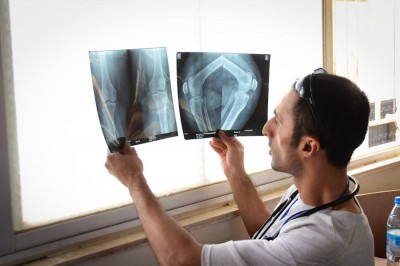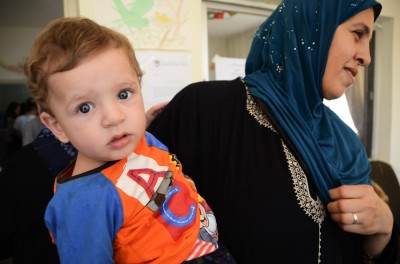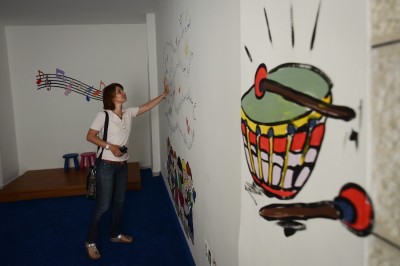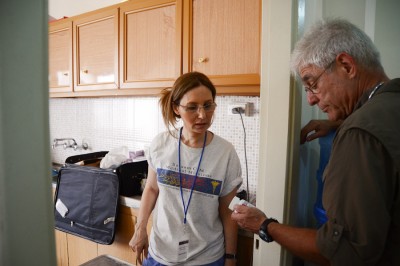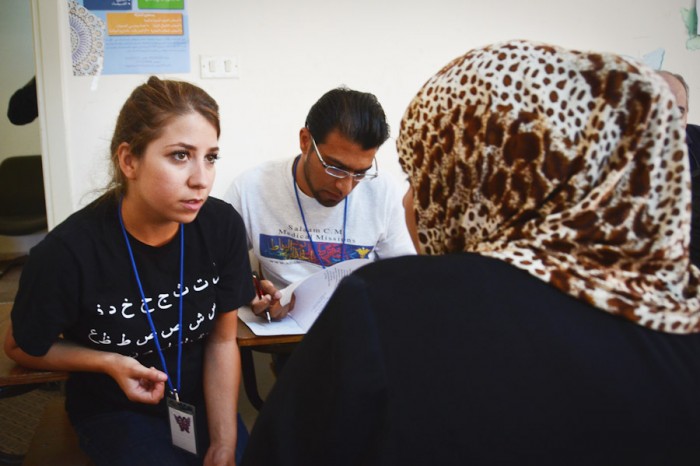
Standing before a room full of wide-eyed children and wider-eyed volunteers, Reham Hamoui is blushing hard.
Her Arabic is a little shaky as she she greets the group at the Malki-SCM Children’s Center, the Amman-based partner to Seattle aid organization, Salaam Cultural Museum (SCM).
It’s the second day of a week-long aid mission put together by the SCM, which sends monthly groups of volunteer medical professionals and humanitarians to Jordan to set up pop-up clinics for Syrian refugees.
Hamoui is usually in charge of organizing the missions from the SCM office in Wallingford. But this time the 27-year-old is on the ground — and back in the Middle East for the first time since she was a child.
From laptops around the United States, young Syrians like her have watched the peaceful movement that began in 2011 explode into the full-blown civil war gripping Syria today.
At first, living abroad meant missing out on a moment of transformation they’d long dreamed of seeing in their home country. But as the situation deteriorates, it’s meant balancing the safety and stability of life in America with a desperate urge to help put Syria back together.
For Hamoui’s family, trouble there began more than two decades ago.
Her father Safouh piloted the presidential airplane for Hafez al-Assad, Bashar’s father and predecessor. As a Sunni Muslim, he was a minority in the Alawite-led government.
Working as the president’s personal pilot meant being privy to a lot of the government’s grim dealings. Hamoui says her father doesn’t like to talk about specifics — just that the things his job required eventually became too much to handle.
He confided in a colleague, and what happened next was something all Syrians live in fear of: He was reported to the Syrian authorities.
Speaking against the country’s leader was rarely tolerated, but doing it as the Syrian equivalent of an Air Force One pilot was unforgivable. Safouh was detained by the government intelligence service and tortured.
As Syria’s war unfolds, so do accounts of torture, forced disappearances and detainment at the hands of Assad’s government, both during the last three years and long before. Hamoui says stories like her father’s are being heard for the first time by the international community because it was only after the revolution began in 2011 that Syrians dared to talk about them.
Up recently, even she wasn’t sure exactly what he experienced.
“Even though he spoke out against the government when it was life or death, he still tries to avoid it and still gets paranoid,” she said of her father, Safouh. “He’ll tell me stuff but makes me swear a hundred times over that I won’t share it with anyone.”
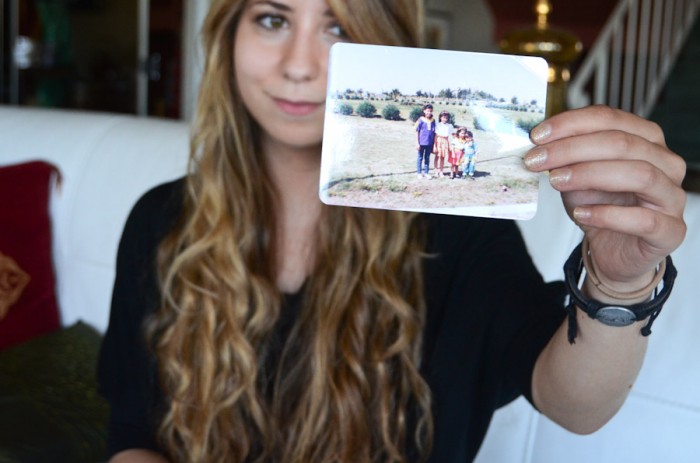
Upon his release, Safouh knew the family had to leave Syria for good.
“They told him [he was] still under investigation, and if he tried anything, they’d kill [his] wife and kids in front of [him],” Hamoui said.
Within a month, Hamoui, her mother, and four siblings were fleeing the country to stay with an uncle in California. A few months later Safouh fled Syria and met them in the United States.
The family now has permanent residency as refugees in the country. If they returned to Syria today, Hamoui says they would almost certainly be arrested and executed as traitors to the government.
So the stakes were particularly high for the family when unrest started in Syria in 2011.
“We kind of romanticized [the uprising]… But I remember my dad just looking at me and saying, ‘this is not what you think it’s gonna be.”
Hamoui remembers waking up early on Friday mornings to find videos uploaded by activists on the ground. Watching thousands of protesters take to the streets in Damascus, Homs and Dara’a, she was filled with hope.
Unlike older, terrified generations, her’s was finally speaking out against the Assads. It felt surreal.
“We kind of romanticized it, so many people had been waiting for so long,” Hamoui says one afternoon in Seattle, shaking her head. “But I remember my dad just looking at me and saying, ‘this is not what you think it’s gonna be.”
It didn’t take long for her to realize what he meant. Several months into the revolution, the conflict hit home when Hamoui watched a YouTube video showing the aftermath of a bombing at a hospital in her hometown of Homs.
When she talked to her family back in Syria later that day, she found out it was her own cousin she’d watched die in the blast.
“On my mother’s side I know it’s over 30 [people], we stopped counting,” she says of family members who have been killed inside Syria.
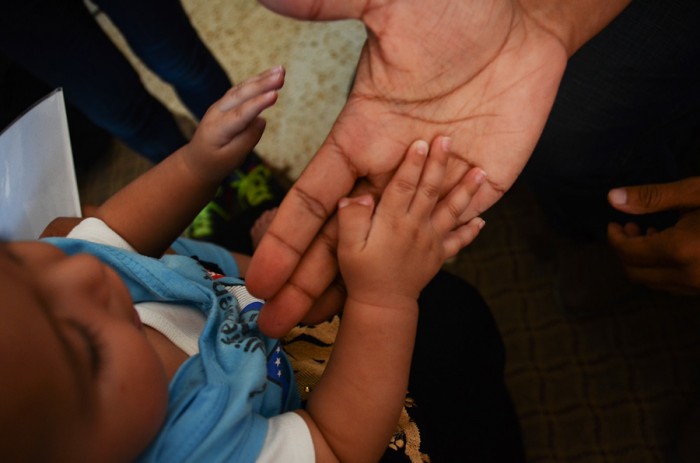
The Syrian revolution has long since deviated from the path of the Arab Spring uprisings it was initially compared to.
The Homs that Hamoui and her family remember is unrecognizable.
By now, international attention to Syria is dedicated almost entirely to tracking the gains and fathomless antics of Islamic State extremist group, also known as ISIS or ISIL. In September, President Obama announced plans to expand airstrikes against ISIS in Iraq to target the group’s positions in Syria. During the same month, he signed a bill approving a train-and-equip program for Syrian moderate factions fighting Assad’s government forces.
Up until that point the White House’s hands-off response to the more than three-year crisis had disappointed Syrian-Americans.
“It’s too little, and too slow,” said Oula Abdulhamid-Alrifai of Obama’s handling of the civil war. The 28-year-old Syrian-American lives in Washington D.C. and works as a Syria researcher at the Washington Institute for Near East Policy.
For her and Hamoui, the Assad government’s violent suppression of dissidents didn’t start in 2011.
When the revolution began, they were frustrated by being shut out of a struggle against a leadership whose brutality had dramatically changed the course of their lives.
Damascus-born Abdulhamid-Alrifai arrived in the United States in 2005 after the pro-democracy, anti-regime organization started by her parents garnered enough attention to earn the family death threats.
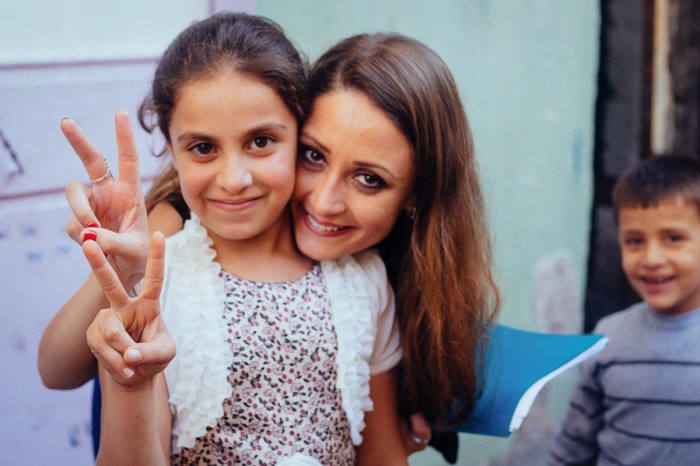
“It was in September [2005], two days before my 18th birthday. It was the most depressing day of my life,” the activist said of leaving Damascus.
Her grandfather was tortured and killed in a Syrian prison in 1982 for speaking against the Assads, and 30 years passed before his death was confirmed. Political dissidence is the family legacy. So when the protests flared up in 2011, she felt like it was her turn.
“2011 was so different,” she said. “…I felt like ‘oh my God, this is the moment I was looking forward to.. now my people are feeling the same things I felt in 2005.”
At the Washington Institute, she works on projects to build trust between the White House and moderate opposition forces still fighting inside Syria. So far, it’s been a tough sell.
After the first round of strikes in September, some Free Syrian Army factions and other rebel brigades condemned the attacks for not including Syrian military positions in their scope.
“Armed groups on the ground are pissed and still don’t trust the United States, they don’t see [the airstrikes] helping them to be honest,” Abdulhamid-Alrifai said.
She also works with the Tharwa Foundation, an American extension of the pro-democracy organization her parents launched in Syria. They’ve sent money, cameras, phones and recording devices to activists on the ground, and broadcasted their messages through social media.
“It would be selfish of me to go back [to Syria] just to feel the soil beneath my feet.”
She says that despite the frustration, online activism is worth it because sometimes it’s all people have.
“[Facebook] is the home of activists, inside and outside [of Syria],” she said. “Some activists inside told me that I was making their voices heard, and if I stopped, they would have no hope for change.”
But at times she still feels stuck on the sidelines.
“It’s different when you protest inside the country,” she said. “I always dreamed of that moment; I wanted to be inside Syria, not outside.”
The war looks a lot different now than it did back in 2011, and though numbers have dipped amid new border policies to protect neighboring countries, thousands of refugees still pour out of Syria each month. It’s hard to imagine voluntarily going in.
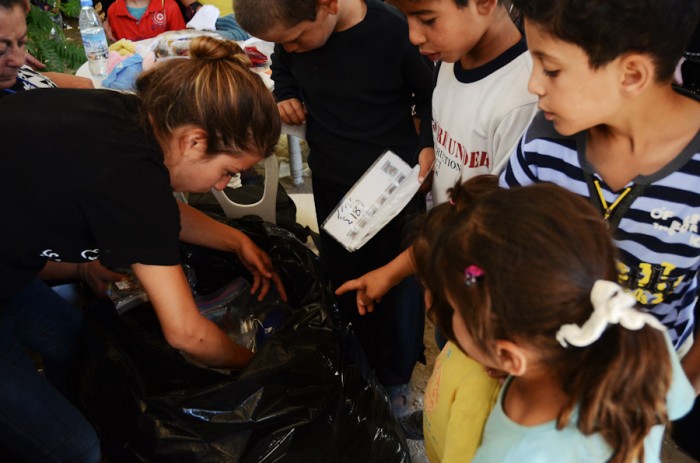
For Hamoui, returning to Homs is a notion she’s had to let go. This fall she’s working toward a degree in communications at the University of Washington, which she hopes to use to help shape U.S. foreign policy toward Syria down the road.
“My dreams of going back have changed,” she said. “It would be selfish of me to go back just to feel the soil beneath my feet.”
During the medical mission, she flits between patient intake areas at one of the SCM’s pop-up community clinics in Madaba, about 26 miles outside Jordan’s capital Amman.
She’s organizing pre-natal packages for pregnant refugees and helping with interpretation between foreign volunteer doctors and their Arabic-speaking patients.
During calmer moments, she trades stories of lost relatives and compares family histories with other Syrian volunteers.
The SCM mission in Jordan reflects just how many people the conflict has impacted — it’s filled with volunteers from Aleppo, Damascus, Dara’a and Homs. Like Hamoui and Abdulhamid-Alrifai, they’ve all escaped Syria, but are still desperate to do whatever it takes from abroad to save the country they love, that’s crumbling before their eyes.
Look out for parts 2 and 3 of “On the Borders of War” later this week.



